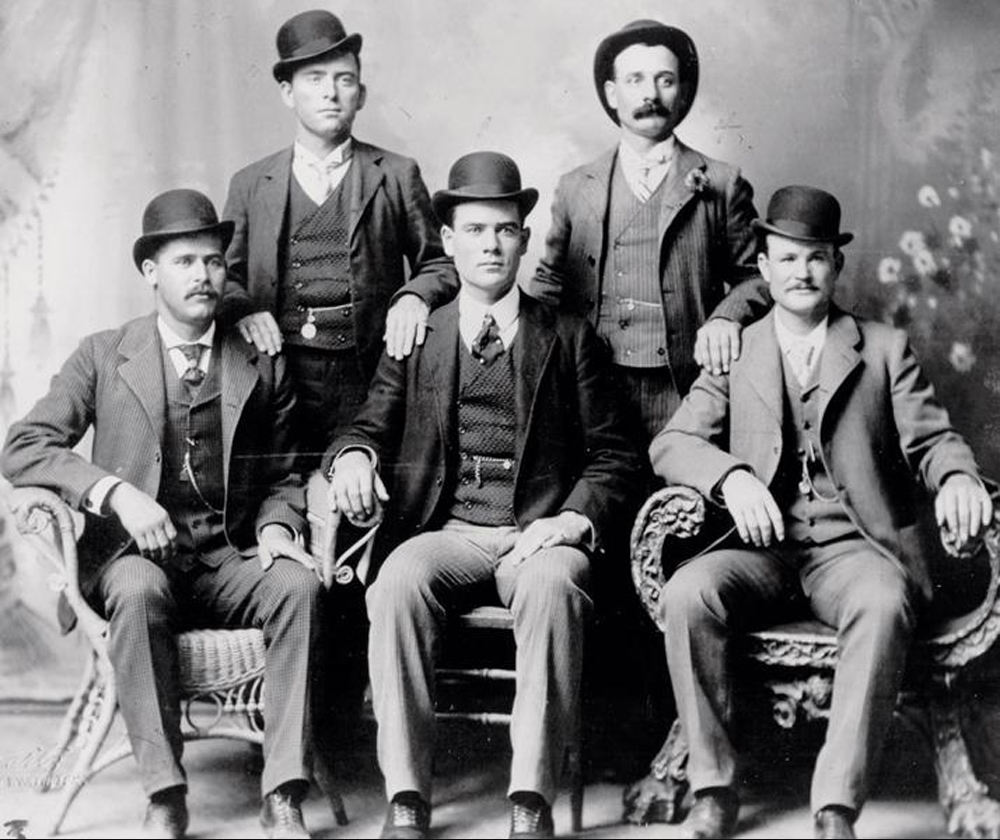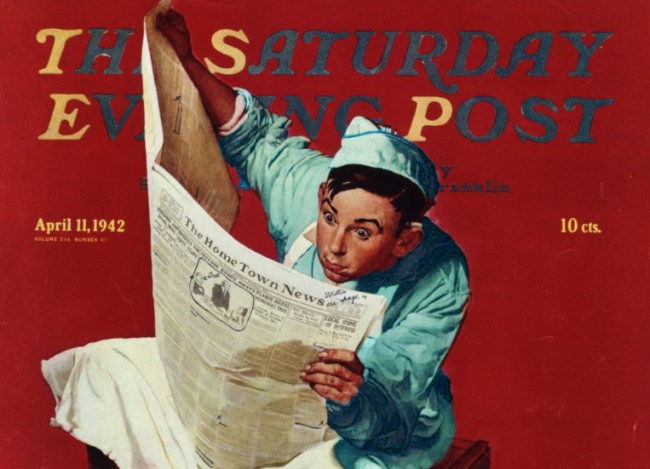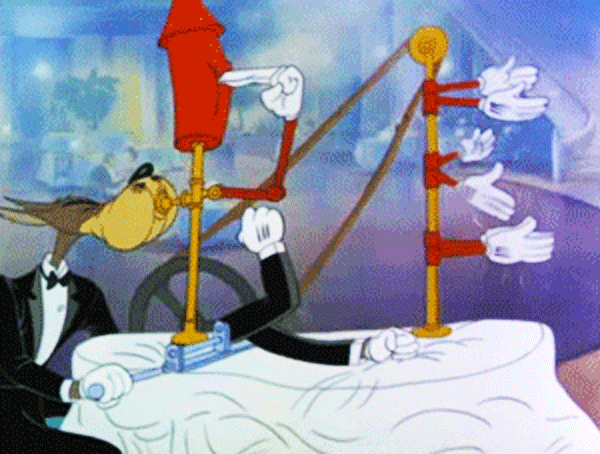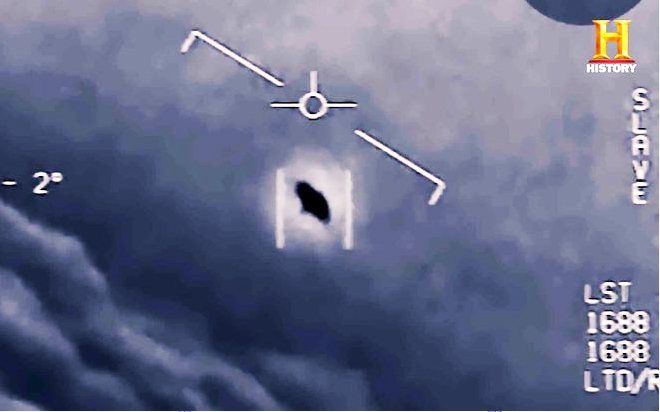
Egypt and Syria launch attacks on Israel, beginning the Yom Kippur War on October 06, 1973
Egypt and Syria launch attacks on Israel, beginning the Yom Kippur War: On October 6, 1973, hoping to win back territory lost to Israel during the third Arab-Israeli war, in 1967, Egyptian and Syrian forces launched a coordinated attack against Israel on Yom Kippur, the holiest day in the Jewish calendar. Taking the Israeli Defense Forces by surprise, Egyptian troops swept deep into the Sinai Peninsula, while Syria struggled to throw occupying Israeli troops out of the Golan Heights. Israel counterattacked and recaptured the Golan Heights. A cease-fire went into effect on October 25, 1973.
On October 6, 1973, hoping to win back territory lost to Israel during the third Arab-Israeli war, in 1967, Egyptian and Syrian forces launched a coordinated attack against Israel on Yom Kippur, the holiest day in the Jewish calendar. Taking the Israeli Defense Forces by surprise, Egyptian troops swept deep into the Sinai Peninsula, while Syria struggled to throw occupying Israeli troops out of the Golan Heights. Israel counterattacked and recaptured the Golan Heights. A cease-fire went into effect on October 25, 1973.
1973 Yom Kippur War: Background
Israel’s stunning victory in the Six-Day War of 1967 left the Jewish nation in control of territory four times its previous size. Egypt lost the 23,500-square-mile Sinai Peninsula and the Gaza Strip, Jordan lost the West Bank and East Jerusalem, and Syria lost the strategic Golan Heights. When Anwar el-Sadat (1918-81) became president of Egypt in 1970, he found himself leader of an economically troubled nation that could ill afford to continue its endless crusade against Israel. He wanted to make peace and thereby achieve stability and recovery of the Sinai, but after Israel’s 1967 victory it was unlikely that Israel’s peace terms would be favorable to Egypt. So Sadat conceived of a daring plan to attack Israel again, which, even if unsuccessful, might convince the Israelis that peace with Egypt was necessary.
In 1972, Sadat expelled 20,000 Soviet advisers from Egypt and opened new diplomatic channels with Washington, D.C., which, as Israel’s key ally, would be an essential mediator in any future peace talks. He formed a new alliance with Syria, and a concerted attack on Israel was planned.
Yom Kippur War: October 1973
When the fourth Arab-Israeli war began on October 6, 1973, many of Israel’s soldiers were away from their posts observing Yom Kippur (or Day of Atonement), and the Arab armies made impressive advances with their up-to-date Soviet weaponry. Iraqi forces soon joined the war, and Syria received support from Jordan. After several days, Israel was fully mobilized, and the Israel Defense Forces began beating back the Arab gains at a heavy cost to soldiers and equipment. A U.S. airlift of arms aided Israel’s cause, but President Richard Nixon (1913-94) delayed the emergency military aid for a week as a tacit signal of U.S. sympathy for Egypt. On October 25, an Egyptian-Israeli cease-fire was secured by the United Nations.
Yom Kippur War: Aftermath
Israel’s victory came at the cost of heavy casualties, and Israelis criticized the government’s lack of preparedness. In April 1973, the nation’s prime minister, Golda Meir (1898-1978), stepped down.
Although Egypt had again suffered military defeat at the hands of its Jewish neighbor, the initial Egyptian successes greatly enhanced Sadat’s prestige in the Middle East and gave him an opportunity to seek peace. In 1973, the first of two Egyptian-Israeli disengagement agreements providing for the return of portions of the Sinai to Egypt were signed, and in 1979 Sadat and Israeli Prime Minister Menachem Begin (1913-92) signed the first peace agreement between Israel and one of its Arab neighbors. In 1982, Israel fulfilled the 1979 peace treaty by returning the last segment of the Sinai Peninsula to Egypt.
For Syria, the Yom Kippur War was a disaster. The unexpected Egyptian-Israeli cease-fire exposed Syria to military defeat, and Israel seized even more territory in the Golan Heights. In 1979, Syria voted with other Arab states to expel Egypt from the Arab League.
On October 6, 1981, Anwar Sadat was assassinated by Muslim extremists in Cairo while viewing a military parade commemorating the anniversary of Egypt’s crossing of the Suez Canal at the start of the Yom Kippur War.
History.com / Wikipedia / Encyclopedia Britannica / Association For Diplomatic Studies & Training / National Interest.org / Modern War Institute At West Point.edu
/ Egypt and Syria launch attacks on Israel, beginning the Yom Kippur War on October 06, 1973 (YouTube) 

First U.S. train robbery on October 06, 1866
First U.S. train robbery: This new method of sticking up moving trains in remote locations low on law enforcement soon became popular in the American West, where the recently constructed transcontinental and regional railroads made attractive targets.
With the western economy booming, trains often carried large stashes of cash and precious minerals. The sparsely populated landscape provided bandits with numerous isolated areas perfect for stopping trains, as well as plenty of places to hide from the law. Some gangs, like Butch Cassidy’s Wild Bunch, found robbing trains so easy and lucrative that, for a time, they made it their criminal specialty. Railroad owners eventually got wise and fought back, protecting their trains’ valuables with large safes, armed guards and even specially fortified boxcars. Consequently, by the late 1800s, robbing trains had turned into an increasingly tough and dangerous job.
As for the Reno gang, which consisted of the four Reno brothers and their associates, their reign came to an end in 1868 when they all were finally captured after committing a series of train robberies and other criminal offenses. In December of that year, a mob stormed the Indiana jail where the bandits were being held and meted out vigilante justice, hanging brothers Frank, Simeon and William Reno (their brother John had been caught earlier and was already serving time in a different prison) and fellow gang member Charlie Anderson.
History.com / Wikipedia / Smithsonian / Genealogy Bank Blog / Legends of America
/ First U.S. train robbery on October 06, 1866 (YouTube) 

Understanding Military Terminology - National Military Command System
(DOD) The priority component of the Global Command and Control System designed to support the President, Secretary of Defense, and Joint Chiefs of Staff in the exercise of their responsibilities.
Also called NMCS.
Joint Publications (JP 6-0) Joint Communications System - Joint Chiefs of Staff

The Old Salt’s Corner
“London 1802”
Milton! thou should'st be living at this hour:
England hath need of thee: she is a fen
Of stagnant waters: altar, sword, and pen,
Fireside, the heroic wealth of hall and bower,
If you can wait and not be tired by waiting,
Have forfeited their ancient English dower
Of inward happiness.
We are selfish men;
Oh! raise us up, return to us again;
And give us manners, virtue, freedom, power.
Thy soul was like a Star, and dwelt apart:
Thou hadst a voice whose sound was like the sea:
Pure as the naked heavens, majestic, free,
So didst thou travel on life's common way,
In cheerful godliness; and yet thy heart
The lowliest duties on herself did lay.
~ William Wordsworth

“I’m Just Sayin”
“In order to learn the most important lessons in life,”
one must each day surmount a fear.”
“Make the most of yourself,”
for that is all there is of you.”
“Let me never fall into the vulgar mistake
of dreaming that I am persecuted
whenever I am contradicted.”
~ Ralph Waldo Emerson

“Thought for the Day”
“The visionary denies the truth to himself,
The visionary denies the truth to himself.”
“No journey is too great,
when one finds what one seeks.”
“You have your way.
I have my way.
As for the right way,
the correct way,
and the only way,
it does not exist.”
~ Friedrich Nietzsche

“What I Learned”
“True power comes from knowledge.
Knowledge comes from understanding.”
“They condemn what they do not understand.”
“Trust God, check all others.”
~ Anonymous

Second Hand News (Links to Articles from Week 40 - September 30, 2019 - October 06, 2019)
 House Intelligence Committee Chairman Adam Schiff undermines Speaker Nancy Pelosi's impeachment inquiry when Schiff's staff spoke with “Whistleblower ” before Complaint was filed
• New York Times.: Envoys to Ukraine drafted commitment for Ukraine to pursue investigations
• It's in the public's interest to know if Joe Biden is corrupt, even if it's also in Trump's interest
House Intelligence Committee Chairman Adam Schiff undermines Speaker Nancy Pelosi's impeachment inquiry when Schiff's staff spoke with “Whistleblower ” before Complaint was filed
• New York Times.: Envoys to Ukraine drafted commitment for Ukraine to pursue investigations
• It's in the public's interest to know if Joe Biden is corrupt, even if it's also in Trump's interest
Hillary Clinton compares decision to not divorce Bill to parenting a transgender child
• Apology not necessary': CNN guest gloats after he is proven right about “Whistleblower” contacting Adam Schiff staff
• 'Attorney General William Barr has Former CIA Director John Brennan 'concerned' about DOJ inquiry into Russia investigation
• Amid impeachment furor, Barr and John Durham flew to Rome to hear a secret tape of Joseph Mifsud, mysterious professor at center of Mueller investigation
Iran’s attack on Saudi Arabia revealed a glaring gap in American missile defenses
• 'Shit just didn't line up': Troops dispute Army claim that wind was factor in botched nighttime parachute jump
Washington Examiner
 Ukraine “Whistleblower” is a registered DEMOCRAT, new leak reveals - which prompted inspector general to claim CIA agent had 'arguable political bias' against Donald Trump
• NOW a SECOND “Whistleblower” comes forward to accuse an unnamed Donald Trump-appointed official of trying to interfere in IRS audit of president's or Mike Pence's tax returns
Ukraine “Whistleblower” is a registered DEMOCRAT, new leak reveals - which prompted inspector general to claim CIA agent had 'arguable political bias' against Donald Trump
• NOW a SECOND “Whistleblower” comes forward to accuse an unnamed Donald Trump-appointed official of trying to interfere in IRS audit of president's or Mike Pence's tax returns
Adam Schiff comes under fire for having his own connection to Ukrainian businessman whose company manufacturers airships and weapons for both the U.S. and Ukraine
• Trump will send a letter to Nancy Pelosi 'daring' her to hold an impeachment vote TODAY
• Chelsea Clinton calls Donald Trump 'the greatest scam in American political history' as she doubles down on her indictment of the president during an explosive appearance on The View with mom Hillary
• Google targeted black people to test new facial recognition software and offered $5 gift cards to homeless and students to take part - but didn't tell them what tests were for
Judge presents Amber Guyger with a BIBLE and hugs her, moments after slain accountant's brother embraced killer cop and FORGAVE and said he loved her
• Muslim-convert Paris knifeman's arrested wife says he 'became deranged and heard voices' the night before attack in which he slaughtered four police colleagues - as it emerges hero officer who shot him dead had only joined force a week earlier
• LA's deadliest 1980s street gangs: Members of the Elm Street Watts, Venice 13 and El Hoyo MaraVilla brandish their guns in fascinating photos from the past
Daily Mail UK
 Sebastian Gorka amuses us with President Trump’s enjoying the impeachment game.
Sebastian Gorka amuses us with President Trump’s enjoying the impeachment game.
 part 2 of 2
part 2 of 2

Nancy Pelosi is play-acting an impeachment inquiry.

The Get-Barr-Before-Barr-Gets-Us Scenario.

Smearing Barr inadvertently creates the global map of the origins of Russiagate.
 2 of 2
2 of 2
 John Batchelor (10/06/2019)
John Batchelor (10/06/2019)

Mr. Answer Man Please Tell Us: Why Do We Get Shivers Up and Down Our Spine?
A few years ago, Félix Schoeller proposed that the feeling of cold in one’s spine, while for example watching a film or listening to music, corresponds to an event when our vital need for cognition is satisfied. Similarly, I have shown that chills are not solely related to music or film but also to the practice of science (mainly physics and mathematics) and to the social logic of religious rituals. I believe that chills and aesthetic emotions in general can teach us something that we do not know yet. They can help us to understand what truly matters to the mind and to the society of minds.
When cold or sick, humans shiver. Shivering is a muscle tremor that produces heat which allows the body to maintain its core temperature in a changing world. Human core temperature can vary temporarily between about 28 to 42 degrees Celsius. Outside these thresholds, death occurs. Humans also shiver in the case of a fever, as heat slows down the rate of pathogen growth and improves the immune response of a living body. Goosebumps or piloerection (the bristling of hairs) can be side effects, as the muscle tremor causes hair to become erect which creates a thin layer of air, thus minimising heat loss. Strangely enough, humans also shiver independently of any such events. For instance, certain social situations seem to provoke the shivers.
Humans are particularly prone to shiver when a group does or thinks the same thing at the same time. When a crowd is sharing a common goal. When they listen to a national anthem or witness self-sacrifice. When they die for their ideas. When collective thought becomes more important than individual life. But humans also shiver from situations that are not social in nature. Some shiver when they manage to find a solution to certain mathematical problems for example, and so shivering cannot be reduced to a social mechanism.
Why does a psychological event trigger a physiological response related to the regulation of temperature? At a fundamental level, cognition requires change. If you stabilise a retina using adequate instruments, the organ ceases to transmit signals to the primary visual cortex, and one gradually becomes blind. From the standpoint of the sense organ, the same object never appears similar to itself twice. Two chairs are never exactly the same. In other words, one is constantly discovering a visual field. Everything you feel, you feel for the first time. Perception is really exploration and, if we can perceive anything at all, it is because we are constantly matching incoming sensory signals to available mental models. You rarely fail to recognise objects in your surroundings. The world is always already meaningful, and it is sometimes beautiful.
The process by which a mind adapts to its world is so effective that people constantly mistake one for the other. When a large part of thought matches a large part of world, one might consciously feel what we call aesthetic emotions. Historically, aesthetics is the science of how perception meets cognition, the science of how you know what you see. The majority of aesthetic emotions are unconscious. They occur every time you see something. When you see something important enough, you might experience these emotions consciously. This happens through bodily changes such as tears, heartbeat increase, sweat – or shivers. The strange thing with shivering is that humans seem to shiver both when they are perfectly capable of predicting the behaviour of external objects in real time, when it all fits together so well, and, surprisingly, when nothing at all can be predicted, when the situation goes out of control.
Félix Schoeller proposed that psychogenic shivers correspond to an event where the measure of the total similarity between all sensory signals and available mental models reaches a local peak value. This can be expressed mathematically in terms of the rate of change of a function of conditional similarity. In this context, any change in learning corresponds to an aesthetic emotion. When the function reaches a local maximum, its derivative tends toward zero, and learning slows down. This corresponds to a ‘turning’ point in your total knowledge. Ten years ago, Perlovsky predicted that such an event should involve knowledge about other minds and about the meaning of life.
We know that psychogenic shivers can be inhibited by an excitant, the opioid-antagonist naloxone. Naloxone is what you would inject in a clinical setting to a patient who is victim of an overdose; it is the antagonist of morphine. It does not come as a surprise that most of my subjects state that they relax after they experience an aesthetic shiver. Besides a clear analogy with the sexual drive, what does this tell us about the exploratory drive?
Félix Schoeller argues that stories that provoke the shivers might bring about this relief of tension by allowing humans to overcome conflicts among fundamental parts of the mind. Such stories might help us to deal with internal contradictions, where both elements are equally resistant to change. Leon Festinger, who in 1957 invented the theory of cognitive dissonance, named this a dissonance of maximum amplitude. The mind creates stories to overcome its own contradictions. Anthropologists call this a myth, and we know from a wealth of work in anthropology that rituals are likely to provoke shivers down the spine.
We give two examples for such fundamental conflicts; one is biological and the other cultural. The biological conflict derives from the fact that, while we survive as a species by sharing goals, we might never access the goal of other minds directly. We thus shiver in cases of seemingly total communication – theoretical synchrony. Another example derives from the fundamental discordance between the altruistic nature of the human animal on the one hand, and the logic of the currently dominant social system on the other. These hypotheses would explain why you might shiver in the course of a film when empathy becomes a necessary condition to reduce narrative tension to its minimum. When the bad guy ends up saving the good guy.
There are three plausible explanations for the fundamental relation between cognition and temperature. One is physiological, the other is physical, and the third is biological. The physiological explanation simply consists of describing psychogenic shivers as a case of fever. The relation between emotion and temperature is in fact very ancient, and even reptiles display evidence of stress-induced hyperthermia.
The physical explanation relates the dissipation of heat at the shiver to the processing of information in the brain. In 1961 the physicist Rolf Landauer at IBM proposed the principle that any erasure of information should be accompanied by the dissipation of heat. This was verified experimentally a few years ago in Lyon. If this hypothesis is not entirely false, then we should eventually be able to predict the amount of heat produced, given accurate knowledge of the information process. Until then, I do not see any good reason to quantify the shiver.
Finally, the biological explanation relates the origins of human thought to the tremendous changes in temperature at its birth. It might be that we can observe this relation between the mechanisms that regulate cognition and the mechanisms that regulate temperature because of the particular context in which thought saw the light of day. In other words, a shiver might have very well accompanied the first human idea. Since then, every time we grasp something important, perhaps we repeat the gesture.
Aeon
• Mental Floss
• Quora
• Science.org
• Wikipedia

NAVSPEAK aka U.S. Navy Slang
GCE: Gross Conceptual Error, an instructor's comment on student work wherein the student has clearly misunderstood a concept.
Gear adrift:
(1) (said when there is) loose or unsecured gear or equipment.
(2) (said of) An incompetent sailor, one who has a screw loose. “Seaman Jones is gear adrift!”
Geedunk:
(1) Candy, or a place that sells candy (namely Gedunk bars).
(2) Ice cream. From the Harold Teen comic strip. From the sound that a coin makes when put into a candy machine.
Geedunk-a-donk: A huge jiggly ass acquired from eating too much geedunk.
General Quarters (GQ): Set to prepare a ship for battle or during a serious casualty such as a main engineering space fire. Every sailor has an assigned duty station to be manned; the ship is set for maximum water tight integrity. On submarines, the term “Battle Stations” is used.
George: The juniormost officer onboard a surface ship. Also spelled “JORG”, meaning Junior Officer Requiring Guidance, or “JORGE”, meaning Junior Officer Requiring General Education.
George jobs: Nit-picking paperwork jobs given to George because no one else wants them. Examples: Morale Officer, Mess Officer.
Wiktionary.org

Just for you MARINE
Gear: Property or equipment; usually referring to an individual's combat equipment.
Gear Adrift: Gear found left lying around or unguarded, from the saying “gear adrift, must be a gift!”.
Geedunk Off: Candy and other sweets, or a location where such items are obtained (such as a store or vending machine); borrowed from the comic strip Harold Teen. See also pogey bait: (Candy, sweets, ice cream, etc., so called because such items are used as “bribes” for a pogue.)
General: One method of addressing a Brigadier General, Major General, Lieutenant General, or General. The other would be either “Sir” or “Ma'am”.
General Orders: List of 11 General Orders for Sentries Detailing rules for guard or sentry duty.
Wikipedia.org

Naval Aviation Squadron Nicknames
VT-35 Training Squadron (VT-35) - nicknamed the “Stingrays”
United States Navy - Naval Air Station (U.S. Navy primary flight training squadron) - Corpus Christi, Texas: May 1, 1960 - present.

Where Did That Saying Come From?

“If it ain't broke, don't fix it:”
Meaning: If something is working adequately well, leave it alone. (Don't try to improve something that already works fairly well. You'll probably end up causing new problems.)
History: Humans seem to have the urge to improve things. Prehistoric hand-axes were made by repeatedly chipping small flakes off pebbles of flint with other hard objects. Million-year-old examples of these have been found that give the impression of being ruined by being chipped just one time too many. That pang of regret we have probably all felt after spoiling something by adding that unnecessary final touch was first faced by Ugg in his cave.
The thought may be Stone Age but the phrase 'if it ain't broke don't fix it', which sounds as though it might come from the Roosevelt or Truman era, is more recent than that. This one is widely attributed to T. Bert (Thomas Bertram) Lance, the Director of the Office of Management and Budget in Jimmy Carter's 1977 administration. He was quoted in the newsletter of the US Chamber of Commerce, Nation's Business, May 1977:
Bert Lance believes he can save Uncle Sam billions if he can get the government to adopt a simple motto: “If it ain't broke, don't fix it.” He explains: “That's the trouble with government: Fixing things that aren't broken and not fixing things that are broken.”
Lance certainly did popularise the term but it seems to have been a colloquial phrase in the southern states of the USA before his celebrated use of it; for example, this piece is from the Texas newspaper The Big Spring Herald, December, 1976:
“We would agree with the old Georgia farmer who said his basic principle was 'If it ain't broke, don't fix it.'”
George Bernard Shaw's 'two countries divided by a common language' comes into play here. The phrase has to be American. In England things don't get broke, they get broken. I know that 'ain't broke' is intended as a knowing southern yokelism, as opposed to 'proper' American, but it is one that wouldn't have originated anywhere else.
When U.S. websites ask 'Forgot Your Password?' I always mutter “No, but I have forgotten it.”
In a few short years, 'if it ain't broke, don't fix it' has, even in the UK, become so established a part of the language as to have become a cliché, which is an unusually quick ascent and descent. Nevertheless, it's a close call as to whether Lance is now best remembered as coining that phrase or for William Safire's pithy description of him as 'Carter's broken Lance' after his resignation in 1977, following the Calhoun National Bank corruption scandal.
Phrases.org.uk

Science & Technology

Using a simulation framework to study spine behaviors of quadruped robots
• A method for producing 3-D Bose-Einstein condensates using laser cooling
• 2-D crystals conforming to 3-D curves create strain for engineering quantum devices
• Team develops new method to gauge atmosphere's ability to clear methane, a potent greenhouse gas
• Oldest flaked stone tools point to the repeated invention of stone tools
• Trap-and-release accelerates study of swimming ciliated cells
Phys.org / MedicalXpress / TechXplore

Bizarre News (we couldn’t make up stuff this good - real news story)
Former Head of Pentagon's Secret UFO Program Has Some (Strange) Stories to Tell

The former leader of the U.S. government's top-secret UFO program has stories to tell, and he is sharing some of them for the first time in a new documentary.
Intelligence officer Luis Elizondo served as the former director of the Pentagon's Advanced Aerospace Threat Identification Program (AATIP), an initiative launched in 2007 to study reports of UFO encounters. Elizondo departed the Pentagon in 2017; that year, he spoke with reporters at The New York Times, confirming the existence of the shadowy agency and describing its mission.
Now, Elizondo is pulling back the curtain on his tenure with the AATIP, which he left because of a lackluster official response to the agency's findings, and their unwillingness to address potential risks from UFOs, according to the new show “Unidentified: Inside America's UFO Investigation”, premiering May 31 on the History Channel at 10 p.m ET/9 p.m. CT. [UFO Watch: 8 Times the Government Looked for Flying Saucers]
No, there isn't a big reveal that UFOs were alien spacecraft all along. But delving into long-hidden accounts of UFO investigations will hopefully encourage people — and authorities - to overcome long-standing stigmas and talk more openly about these mysterious aircraft, some of which may pose a bigger threat than we realize, Elizondo told .
UFOs have perplexed and fascinated people for decades; they also pose a unique challenge to federal agents trying to determine if they represent a threat to national security. Before AATIP, the U.S. Air Force had launched Project Blue Book, which investigated more than 12,000 purported UFO sightings from 1952 to 1969.

During Elizondo's tenure at AATIP, observers reported UFOs flying at hypersonic speeds - more than five times the speed of sound. Yet there were none of the signatures that usually accompany aircraft flying at such fantastic speeds, such as sonic booms, he said.
The UFOs were also unexpectedly mobile, traveling so fast that they would have experienced gravitational forces, or G-forces, that far exceed the limits of endurance for both humans and aircraft. The F-16 Fighting Falcon aircraft, one of the most maneuverable in the U.S.'s arsenal, reaches its limit at around 16 to 18 G's, while the human body can withstand about 9 G's “for a very short time” before a person would start to black out, Elizondo said.
“"These things that we were observing were pulling 400 to 500 G's”, he said. “They don't have engines or even wings, and they are able to seemingly defy the natural effects of Earth's gravitational pull.”
Some of the UFO sightings reported to AATIP were eventually resolved, as aerial drones or test firings of new types of missiles that were spotted from an unusual angle. But while many astonishing UFOs still defied explanation, there simply isn't enough evidence to suggest they belonged to extraterrestrials, Elizondo added.

However, another possibility is even more unsettling than the prospect of an alien invasion: that a foreign adversary had secretly developed technologies that are “strategic game-changers”, unlike anything ever seen before, he said. Addressing that potential threat is a necessary step that government officials - even those that supported AATIP - don't take seriously enough, according to Elizondo.
What's more, the entrenched secrecy shrouding official UFO investigations only reinforces the association of UFOs with “tinfoil hats and ridiculous stories.”
“We trust the American people to know that North Korea has nuclear warheads pointed at Los Angeles, yet we don't trust them with the knowledge that there's something in our skies and we don't know what it is? That seems counterproductive to me”, Elizondo said.
• Seven Things Most Often Mistaken for UFOs
• Nine Strange, Scientific Excuses for Why Humans Haven't Found Aliens Yet
• Thirteen Ways to Hunt Intelligent Aliens
Live Science (05/30/2019) 


SONG FACTS

“Metal Health (Bang Your Head)” - Quiet Riot
Album: Metal Health (1983)
Released 1983 
The song title is a play on the phrase “Mental Health”, and is a celebration of the rebellious nature of heavy metal and fans who bang their heads to the music. Lead singer Kevin DuBrow wrote the lyric, which is based on the slights he heard throughout his life. DuBrow, who died of a drug overdose in 2007 at age 52, did indeed have a ”mouth like an alligator”, as he would always speak his mind.
Thanks to a video that got lots of airplay on MTV, this song helped bring heavy metal music with a pop sheen into the mainstream, paving the way for photogenic hair bands of the '80s like Mötley Crüe and Twisted Sister.
Quiet Riot had been around for a while, releasing their first album in 1977 with Randy Rhoads, who later became Ozzy Osbourne's go-to axeman, on guitar. By the time they released their third album, Metal Health, they were polished and poised for stardom. “Metal Health” was the first single, but it went nowhere. Their cover of the Slade song “Cum On Feel The Noize” was released as a follow-up, and that one caught on in America, going to #5 in November 1983, the same month the Metal Health album topped the chart, becoming the first metal album to do so. With the band now established, “Metal Health” went up the chart, landing at #31 in February 1984.
Guitarist Carlos Cavazo and drummer Frankie Banali are the co-writers on this track along with Kevin DuBrow.
“We were huge fans of AC/DC, so we wanted something that had a very simple, straight ahead groove at a certain tempo”,
Frankie Banali said in a Songfacts interview.
“It went through a lot of different changes, and what I mean by 'changes', a lot of that song has to do with the tempo. I listen to a lot of classical music and jazz, and the thing that I found interesting about both classical music and jazz is that certain parts of a song only work at a certain tempo, and they don't work at another tempo. With jazz, they shift gears - the same thing with classical. With rock 'n' roll, you basically start at a tempo and you end at that tempo. So the tempo on that record is not slow, but it really digs into the groove. It didn't work at that tempo live, which is why we actually played it a little faster live - because it gets the energy of the audience. So that is something that we paid attention to. And at one point, the song was much longer than it is now. Kevin was really good about trimming fat.”
The video, directed by Mark Rezyka, is a case study on how to make a memorable clip on the cheap. It was the band's first video, and the budget was very tight. They got a community collage to let them film it there for free, and recruited student to form the crowd in the stage scenes.
As opposed to many early MTV favorites, it has a cohesive storyline: Kevin Dubrow is strapped into a straightjacket, wearing a Hannibal Lecter mask, trapped in a padded room. He makes a daring escape from the asylum, then drops from the rafters to rock the crowd at the concert.
MTV loved it, since zeroed in on their target demographic of young male rock fans, but it didn't do well at first. After “Cum On Feel The Noize” (also directed by Rezyka) took off, the network revived “Metal Health”. Dubrow's asylum look became one of the iconic images of MTV.
This song provided not just the title track for the album, but also the visual presentation. The album cover shows DuBrow in a straightjacket and mask, as later seen in the video. The mask became a kind of talisman for the band, showing up in their promotional materials and on later album art and videos.
The songwriter/producer Spencer Proffer produced the album, including this track. Proffer owned a recording studio and was key to giving Quiet Riot their start, but much of his later work was far less Metal: he was the music consultant on the show Sabrina, The Teenage Witch, and produced the TV series Happily Ever After: Fairy Tales for Every Child.
Quiet Riot, official website / Billboard / All Music / Song Facts / Ultimate Classic Rock / Quiet Riot
Image: “Metal Health (album)” by Quiet Riot

Trivia
● This musical piece for orchestra tells the story of a disobedient boy's encounter with a wild animal. Name the composer and the piece of music.
Answer to Trivia
● What British writer, in 1954, created The Lord of the Rings?
Answer to Trivia
● Which land animal has the longest gestation period, 650 days?
Answer to Trivia
● The easternmost, westernmost, southernmost, and largest countries of Africa all begin with the same letter. Name these countries.
Answer to Trivia

A Test for People Who Know Everything
From the Jeopardy Archives Category - “WELCOME BACK, U.S. SUPREME COURT” ($400)
“Each justice gets 4 of these helpers who may hope to rise to the court themselves, as young Stephen Breyer did.”
● Answer for People Who Do Not Know Everything, or Want to Verify Their Answer Chambers Associate
From the Jeopardy Archives Category - “WELCOME BACK, U.S. SUPREME COURT” ($800)
“It's not Pig Latin you're hearing, it's this word from Old French threepeated by the marshal each time court begins.”
● Answer for People Who Do Not Know Everything, or Want to Verify Their Answer Supreme Court.gov
From the Jeopardy Archives Category - “WELCOME BACK, U.S. SUPREME COURT” ($1,000)
“In 1790 this Secretary of State made fun of British wigs, putting an end to any thought of our justices wearing them.”
● Answer for People Who Do Not Know Everything, or Want to Verify Their Answer Monticello.org
Answer to Last Week's Test
From the Jeopardy Archives Category - “HORSE SENSE” ($200)
“In ancient Rome, a quadriga was one of these pulled by 4 horses.”
● Answer: A Chariot. Ancient.eu
From the Jeopardy Archives Category - “HORSE SENSE” ($600)
“In 'The Legend of Sleepy Hollow', this man borrows a 'broken-down plow-horse' named Gunpowder.”
● Answer: Ichabod Crane. Disney.fandom
From the Jeopardy Archives Category - “HORSE SENSE” ($1,000)
“American Revolutionary War cavalry officer Henry Lee got this nickname from his skillful riding.”
● Answer: Light-Horse Harry. Stratford Hall.org

Joke of the Day
“Keep Quiet and Crochet a Doll”

Keep Quiet and Crochet a Doll
A man and woman had been married for more than 60 years.
They had shared everything. They had talked about everything.
They had kept no secrets from each other, except that the little old woman had a shoe box in the top of her closet that she had cautioned her husband never to open or ask her about.
For all of these years, he had never thought about the box, but one day, the little old woman got very sick and the doctor said she would not recover.
In trying to sort out their affairs, the little old man took down the shoe box and took it to his wife's bedside.
She agreed that it was time that he should know what was in the box. When he opened it, he found two crocheted dolls and a stack of money totaling $95,000.
He asked her about the contents. “When we were to be married”, she said, “my grandmother told me the secret of a happy marriage was to never argue. She told me that if I ever got angry with you, I should just keep quiet and crochet a doll.”
The little old man was so moved; he had to fight back tears. Only two precious dolls were in the box. She had only been angry with him two times in all those years of living and loving. He almost burst with happiness.
“Honey”, he said, “that explains the dolls, but what about all of this money? Where did it come from?”
“Oh”, she said. “That's the money I made from selling the dolls.”
































